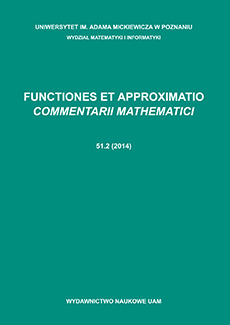Abstract
Each Dirichlet series $D = \sum_{n=1}^{\infty} a_n \frac{1}{n^s}$, with variable $s \in \mathbb{C}$ and coefficients $a_n \in \mathbb{C}$, has a so called Bohr strip, the largest strip in $\mathbb{C}$ on which $D$ converges absolutely but not uniformly. The classical Bohr-Bohnenblust-Hille theorem states that the width of the largest possible Bohr strip equals $1/2$. Recently, this deep work of Bohr, Bohnenblust and Hille from the beginning of the last century was revisited by various authors. New methods from different fields of modern analysis (e.g. probability theory, number theory, functional and Fourier analysis) allow to improve the Bohr-Bohnenblust-Hille cycle of ideas, and to extend it to new settings, in particular to Dirichlet series which coefficients in Banach spaces. We survey on various aspects of these new developments.
Citation
Andreas Defant. Domingo García. Manuel Maestre. Pablo Sevilla-Peris. "Bohr's strips for Dirichlet series in Banach spaces." Funct. Approx. Comment. Math. 44 (2) 165 - 189, June 2011. https://doi.org/10.7169/facm/1308749122
Information





